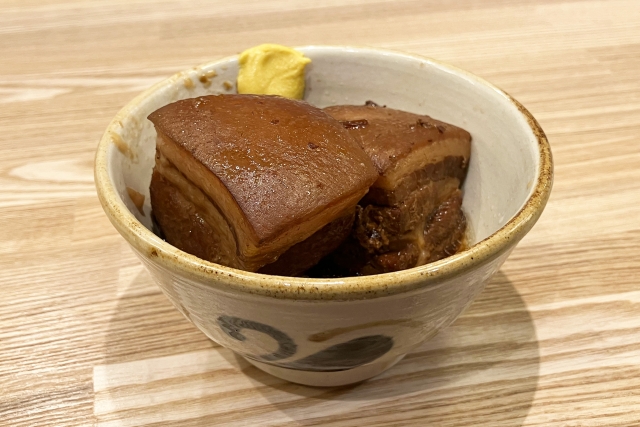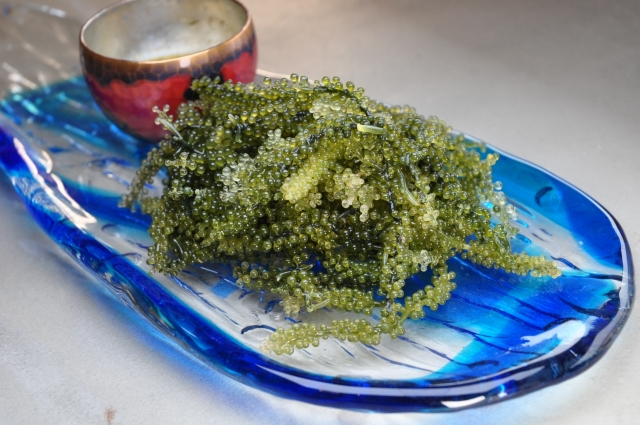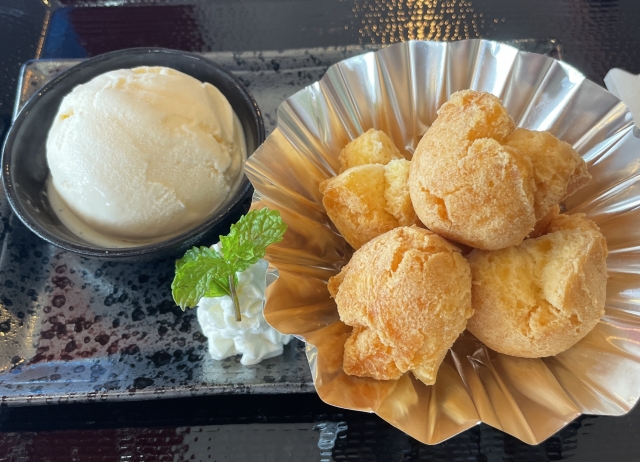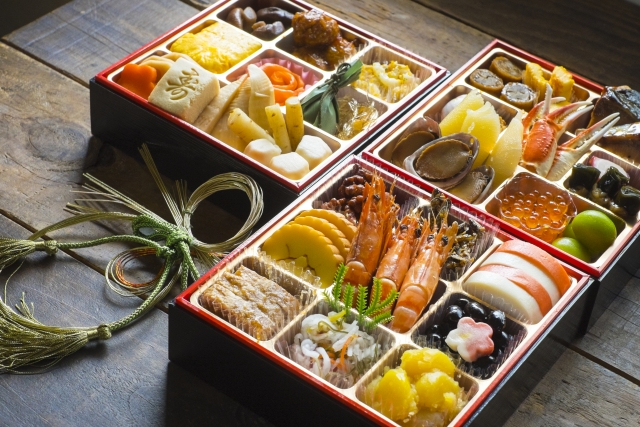
New Year’s Day (Shōgatsu (正月) is one of the most important holidays in Japan. Japan has celebrated the New Year on January 1 since adopting the Gregorian calendar in 1873, during the Meiji period. Before this, Japan observed the New Year according to the traditional lunar calendar, similar to many other East Asian cultures, such as China and Korea. The lunar New Year typically fell in late January or early February. The transition to the Gregorian calendar was part of Japan’s efforts to modernize and align with Western practices during the Meiji Restoration.
For the Japanese, welcoming the New Year has a special meaning. People in Japan used to believe that the Toshigami visits homes at the beginning of the year to bring good luck, prosperity, and protection to harvests. Toshigami also gave one year to people in the house
To welcome Toshigami, people prepare special foods, decorate their homes, and perform a ritual called osouji to purify their homes. Some decorations include kadomatsu (New Year’s pine and bamboo decorations), shimekazari (sacred straw festoon), and kagamimochi (round mirror-shaped rice cakes).
Although Japan has a culture of rice cultivation, white rice used to be a luxury food. However, people ate white rice that they could not normally eat during the New Year’s holiday period, from December 31 to January 3, to celebrate the New Year. From the mid-Heian period (11th century), this custom of eating white rice was changed to rice cakes made by pounding rice.
It was believed that on 31 December, all the good and bad things that had happened during the old year were gone, and people could start with a clean slate. In order to receive good ‘luck’ for the new year from the Toshigami, people cleaned their houses in the middle of December decorated their houses for the New Year and prepared rice cakes. On January 1, the family would stay home and wait for the Toshigami to come.
Today, the most well-known Japanese New Year’s dish is Osechi-ryori. Osechi-ryori originally referred to a meal offered to the gods on the first day of a new season, which marks the seasonal transitions in traditional Japanese culture. The dish consists of white rice, fish and soup.
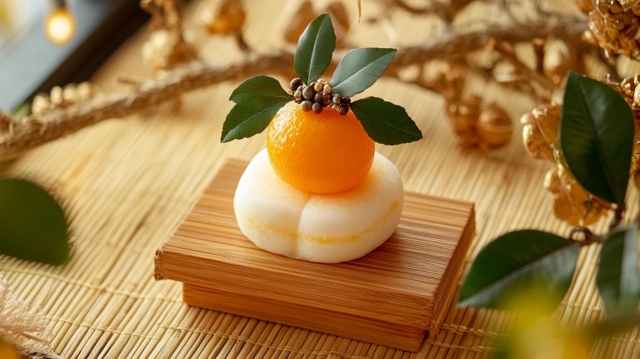
Osechi-ryori for the New Year has two main types: ‘Hourai’ from Kyoto, the old capital, and ‘Kuitsumi’ from Edo (the former name of Tokyo). These are decorated with pine, bamboo and plum blossoms and served with white rice, oranges, chestnuts, dried persimmons, yuzuriha (dried persimmons), kombu (kelp) and Ise lobsters. While ‘Horai’ was only for decoration, ‘Kuitsumi’ was for New Year’s guests to take a bite to celebrate the occasion.
In modern times, media introduced Osechi-ryori as a dish in a multi-layered box, with the first layer containing the main dish, the second layer containing simmered dishes and the third layer containing vinegared dishes, which is now known as jyu-bako (multi-layered lacquered box).
https://www.gov-online.go.jp/hlj/ja/january_2025/january_2025-00.html (‘VOL.199 JANUARY 2025 [NEW YEAR’S ISSUE 2025] CELEBRATING A BRIGHT NEW YEAR IN JAPAN’ from the website of ‘Government of Japan’)
Osechi-ryori was traditionally prepared to last several days as cooking was considered taboo during the first three days of the new year. This practice allowed women to take a break from household chores.
Osechi-ryōri consists of various beautifully arranged dishes, typically packed in tiered lacquer boxes (jubako). Each dish has symbolic meanings, often linked to wishes for prosperity, health, and happiness in the coming year. Some common Osechi-ryōri include:
- Kuri-kinton (Sweet Chestnuts and Mashed Sweet Potatoes )
Symbolizes wealth and financial fortune due to its golden color. - Datemaki (Sweet Rolled Omelette)
Resembles scrolls, symbolizing knowledge and education. - Kuromame (Black Soybeans)
Represents health and diligence. - Kazunoko (Herring Roe)
Stands for fertility and family prosperity. - Ebi (Shrimp)
Represents longevity, as the shrimp’s curved body resembles an elderly person. - Tai (Sea Bream)
Associated with celebration and good luck because its name sounds like “medetai” (auspicious). - Namasu (Pickled Carrot and Daikon)
Symbolizes harmony with its red and white color scheme (a lucky combination in Japanese culture).
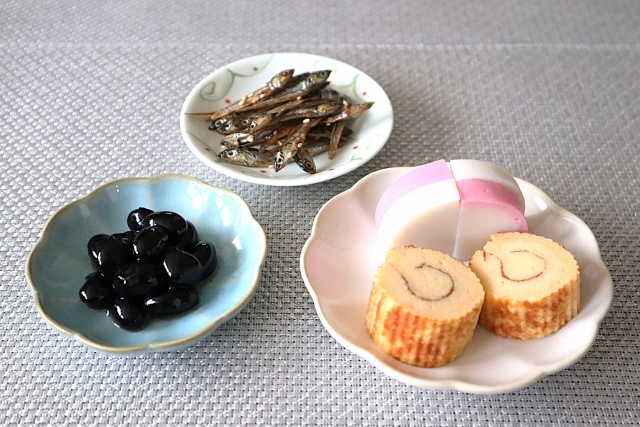


Modern Celebrations
While Osechi-ryori remains a cherished tradition, modern families often complement it with additional foods, such as sushi, sashimi, and Western-style dishes. Some also order osechi-ryori from stores or restaurants instead of making it at home since traditional osech-ryouri takes lots of time to prepare.
It is well-known that the food culture of the Kanto and Kansai regions differs regarding the seasoning or ingredients used. The ingredients of Osechi-ryori also differ from region to region, not only in the Kanto and Kansai regions. While black soybeans, herring roe and fish paste are common ingredients used for Osechi-ryori in the many areas, local ingredients and dishes unique to the region are usually used.
Shall we explore local Osechi-ryouri in Japan? Let’s start from northern Japan!
The Hokkaido region is Japan’s northernmost island, known for its pristine nature and cold climate. The Tohoku region is also known for its cold winters and agricultural abundance. Osechi-ryori in Hokkaido focuses on seafood (crab, salmon, roe, and sea urchin), reflecting its maritime abundance. Tohoku emphasizes preserved and hearty foods (pickled herring, smoked pickles, and grilled rice skewers) to survive harsh winters.
Below are some of the popular ingredients and local specialities of Osechi-ryori in the Hokkaido and Tohoku regions.
Hokkaido
- Crabs are a luxurious centerpiece for Hokkaido’s New Year celebrations, often served boiled, steamed, or raw.
- Fresh salmon roe,often soy-marinated, is used in dishes like chirashi sushi or as a garnish, reflecting Hokkaido’s rich salmon harvest.
- Kazunoko (Herring Roe), a symbol of fertility, is particularly significant in Hokkaido, where herring fishing has historically been vital.
- Sea Urchin (Uni) is sometimes included in festive meals, served fresh or on sushi, showcasing Hokkaido’s high-quality seafood.
- Salted or spiced Tarako (Cod Roe) is popular in Hokkaido for its availability and distinctive flavor.
- Jingisukan (Grilled Lamb) occasionally appear in New Year celebrations.
- Zoni (mochi soup) in Hokkaido often features salmon, kelp, or regional vegetables in a soy-based broth.


Tohoku
- A specialty of Akita, kiritanpo (Grilled Rice Skewers) is made from mashed rice, grilled on skewers, and served in nabe (hot pot) or as a side dish.
- Hoya (Sea Squirt), a marine delicacy especially popular in Miyagi Prefecture, is sometimes featured in New Year dishes for its distinctive flavour.
- Iburi-Gakko (Smoked Pickles), a specialty of Akita,is smoked and pickled daikon, whichadds a smoky, umami-rich element to New Year meals.
- Nishin Zuke (Pickled Herring) with vegetables and koji (fermented rice) is a traditional dish in coastal Tohoku, reflecting the area’s fishing culture.
- Harako Meshi (Salmon and Roe on Rice), similar to chirashi sushi, emphasizes fresh salmon and ikura, especially in Miyagi and coastal regions.
- Each prefecture in Tohoku has its variation of zoni soup, often featuring local ingredients such as dried cod, root vegetables, and mochi.
- Matsumaezuke, a preserved dish made of squid, herring roe, and kelp, originally from Hokkaido but popular in Tohoku, often included in New Year spreads.
- Local chestnuts and sweet potatoes are used in kurikinton or other dishes, andTohoku’s chestnuts and sweet potatoes are prized for their natural sweetness.
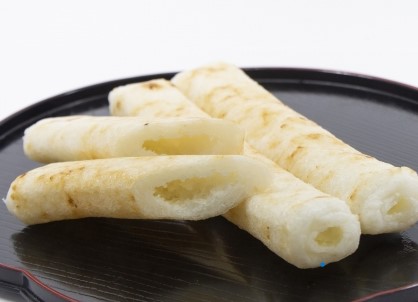
East Japan
Kanto Region
Kanto’s Osechi-ryori is less sweet and uses more soy sauce. In addition, Kanto Osechi-ryori often emphasizes simplicity and elegance in presentation, reflecting the Edo-period culinary aesthetics that shaped the region’s food culture.
Regional and local specialities in Osechi-ryori in the Kanto region:
- Tai no Shioyaki (grilled sea bream): Tai (sea bream) is often included in Osechi-ryori as a symbol of celebration, as the name tai is associated with the word medetai (auspicious).
- Chikuzen-ni (simmered root vegetables): Although originating in Kyushu, this dish is popular in Kanto Osechi-ryori and includes simmered chicken, burdock root, lotus root, and carrots.
Regional and local specialities in Osechi-ryori in the Kansai region:
- Zoni (New Year’s soup): Kansai zoni is distinctive:
- The broth is made with white miso.
- The mochi is round (symbolizing harmony) and typically boiled rather than grilled.
- Local vegetables, such as taro, daikon, and carrots, are often included.
- Regional and Local Specialties in Kansai Osechi-ryori:
- Kohaku Namasu: Red and white namasu is a Kansai favorite, but it may include yuzu zest for an added regional touch.
- Buri no Teriyaki (teriyaki yellowtail): Buri (yellowtail) is a symbol of success and progression in life. In Kansai, it is often prepared with a teriyaki glaze.
- Chirimen Sansho (dried baby sardines with sansho pepper): A Kyoto specialty, this savory and slightly spicy dish is unique to the Kansai region.
- Yatsuhashi (cinnamon rice cake): Although more of a dessert, this Kyoto specialty might accompany Osechi-ryori meals.
- Ozōni with Mochi: Kyoto’s zoni often uses Kyoto-grown vegetables and tofu along with white miso and round mochi.
- Pickled Vegetables: Kansai, especially Kyoto, is known for its pickled vegetables such as shibazuke (pickled cucumbers and eggplant), senmaizuke (pickled turnips), and sunomono (vinegar-marinated vegetables).
Central Japan
The Osechi-ryori of Central Japan reflects the region’s diversity, incorporating high-quality coast seafood, hearty mountain ingredients, and a blend of savory and sweet flavors. Unique dishes like kabura-zushi, buri dishes, and gold-leaf decorations make osechi from this region particularly special, showcasing a balance of luxury, tradition, and local flavors.
Regional and local specialities in Osechi-ryori in Central Japan:
- Zoni (New Year’s soup): In Central Japan, zoni soup often features a clear broth based on soy sauce and vegetables such as spinach, carrots, and taro. The shape of the mochi varies by prefecture, such as round mochi in Nagano and Gifu and Square grilled mochi in Shizuoka.
- Hoba Miso (Magnolia Leaf Miso): In Gifu and parts of Nagano, miso paste grilled on magnolia leaves might be served during New Year’s meals. It reflects the region’s mountainous traditions.
- Shio Kara (fermented seafood): A specialty in coastal areas like Shizuoka, reflecting the region’s access to fresh seafood.
- Sweet Chestnuts: Gifu and Nagano are famous for chestnuts, which are often candied or used in Osechi-ryori dishes like kuri-kinton (mashed sweet potatoes with chestnuts). The sweetness symbolizes prosperity.
- Fresh Wasabi: Shizuoka is renowned for its wasabi production. Fresh wasabi might be included as a garnish or in seafood dishes for a local touch.
- Iwana or Ayu (grilled river fish): In mountainous regions like Nagano, river fish is grilled or preserved as part of festive meals.
- Pickled Vegetables: Central Japan, particularly Nagano, is known for its high-quality pickled vegetables, such as nozawana-zuke (pickled mustard greens), which might appear in Osechi-ryori or as accompaniments to other dishes.
- Heshiko (fermented fish): A specialty of regions bordering the Sea of Japan (like Niigata), this dish reflects traditional preservation methods.
- Tai no Shioyaki (grilled sea bream): Sea bream is symbolic of celebration and is included in Osechi-ryori in coastal areas like Shizuoka.
.jpg)
West Japan
Kansai
The Osechi-ryori of the Kansai region is characterized by its elegant presentation, sweeter and lighter flavors, and a focus on vegetables and local delicacies. Influenced heavily by Kyoto’s refined culinary traditions, Kansai Osechi-ryori emphasizes harmony, balance, and understated beauty, making it distinct from the osechi styles of other regions.
Regional and local specialities in Osechi-ryori in the Kansai region:
- Zoni (New Year’s soup): Kansai zoni is distinctive:
- The broth is made with white miso.
- The mochi is round (symbolizing harmony) and typically boiled rather than grilled.
- Local vegetables, such as taro, daikon, and carrots, are often included.
- Regional and Local Specialties in Kansai Osechi-ryori:
- Kohaku Namasu: Red and white namasu is a Kansai favorite, but it may include yuzu zest for an added regional touch.
- Buri no Teriyaki (teriyaki yellowtail): Buri (yellowtail) is a symbol of success and progression in life. In Kansai, it is often prepared with a teriyaki glaze.
- Chirimen Sansho (dried baby sardines with sansho pepper): A Kyoto specialty, this savory and slightly spicy dish is unique to the Kansai region.
- Yatsuhashi (cinnamon rice cake): Although more of a dessert, this Kyoto specialty might accompany Osechi-ryori meals.
- Ozōni with Mochi: Kyoto’s zoni often uses Kyoto-grown vegetables and tofu along with white miso and round mochi.
- Pickled Vegetables: Kansai, especially Kyoto, is known for its pickled vegetables such as shibazuke (pickled cucumbers and eggplant), senmaizuke (pickled turnips), and sunomono (vinegar-marinated vegetables).

Chugoku Region
The Osechi-ryori in the Chugoku region reflects a balance between the bounty of the sea and the richness of the mountains. The use of local specialties like Hiroshima oysters, Matsuba crab, and regional zoni variations makes Chugoku osechi unique, blending the area’s natural abundance with traditional Japanese New Year’s customs.
Regional and local specialities in Osechi-ryori in the Chugoku Region:
- Zoni (New Year’s soup): In the Chugoku region, zoni often features:
- A clear soy-based broth.
- Round or square mochi, depending on the prefecture.
- Local ingredients like oysters in Hiroshima, or daikon and taro in Shimane.
- Regional and Local Specialties in Chugoku Osechi-ryori:
- Oysters: Hiroshima is renowned for its oysters, which are often grilled, marinated, or added to zoni soup during New Year’s celebrations.
- Fugu (pufferfish): Yamaguchi, particularly Shimonoseki, is famous for its fugu. This luxurious fish may appear as part of New Year’s meals.
- Anago (saltwater eel): Commonly used in Hiroshima, anago might be simmered or grilled and included in Osechi-ryori.
- Hoshigaki (dried persimmons): A specialty in areas like Okayama, dried persimmons are often served as a sweet snack alongside Osechi-ryori.
- Matsuba-gani (snow crab): From Tottori, snow crab may feature in festive New Year’s meals, either as part of Osechi-ryori or as a standalone delicacy.
- Shijimi Clams: Shimane’s Lake Shinji is famous for its shijimi clams, which are often used in soups or as a side dish in Osechi-ryori.
- Iwagaki (rock oysters): A specialty in Shimane, these oysters are served fresh, grilled, or marinated during festive meals.
- Pickled Vegetables: Locally grown vegetables, such as mizuna, turnips, and mustard greens, are pickled and served as accompaniments in Osechi-ryori.
Shikoku Region
Shikoku’s Osechi-ryori has unique touches like citrus-seasoned dishes, bonito specialties, and regional zoni variations highlighting the area’s natural abundance and cultural pride, making Shikoku’s osechi distinct and flavorful.
Regional and local specialities in Osechi-ryori in the Shikoku region:
- Zoni (New Year’s soup): Shikoku’s zoni variations differ by prefecture:
- Ehime: Features a clear dashi broth with vegetables like daikon and carrots, and grilled square mochi.
- Kagawa: Uses a miso-based soup with locally grown vegetables.
- Tokushima and Kochi: Variations often include yuzu zest and locally caught seafood.
- Sanuki Udon (Kagawa): While not a traditional Osechi-ryori dish, Sanuki udon may be served during the New Year period for its comforting and auspicious nature.
- Citrus-Infused Dishes: Shikoku is famous for its citrus fruits like yuzu, sudachi, and mikan (mandarins). These are used to flavor zoni soup, namasu, and other dishes.
- Sawachi Ryori (Kochi): A traditional large platter of fresh seafood and vegetables, often included in festive meals during New Year.
- Ise Ebi (spiny lobster): A delicacy in coastal areas, often grilled or served raw as part of Osechi-ryori or celebratory meals.
- Uzushio Seaweed (Tokushima): This premium seaweed is harvested near the Naruto whirlpools and used in soups or salads.
- Jakoten (Ehime): A fried fish cake made from small fish like sardines or mackerel, often served as part of Osechi-ryori.
- Salt-Cured Bonito (Kochi): Bonito, a Kochi specialty, might be lightly smoked or salt-cured and added to New Year’s dishes.
- Awa Odori Chicken (Tokushima): This local chicken may be featured in stews or other festive dishes.
Kyusyu Region
Osechi-ryori in the Kyushu region is bold seasonings, seafood focus, and incorporation of local specialties like mentaiko, satsuma-age, and kurobuta pork, Kyushu’s osechi offers a distinctive and hearty celebration of the New Year.
Regional and local specialities in Osechi-ryori in the Kyushu region:
- Zoni (New Year’s soup): Zoni in Kyushu has significant regional variations:
- Fukuoka and Saga: Often uses a clear broth with vegetables like taro, shiitake mushrooms, and grilled round mochi.
- Kumamoto and Miyazaki: May incorporate chicken or pork in the soup for a richer flavor.
- Kagoshima: Features a miso-based broth with sweet potatoes and seafood.
- Karashi Mentaiko (spicy cod roe): A Fukuoka specialty, mentaiko is often served as part of Osechi-ryori or alongside zoni.
- Buri (yellowtail): A common celebratory fish, often grilled or simmered. Kyushu’s coastal areas are known for high-quality buri.
- Satsumaage (fried fish cakes): A Kagoshima specialty made from ground fish, these are often included in Osechi-ryori.
- Oysters: Especially from the Ariake Sea in Saga and Kumamoto, oysters are used in various dishes or served grilled.
- Lotus Root with Mustard (Karashi Renkon): A Kumamoto specialty where lotus root is stuffed with mustard and miso paste, representing resilience and a bright future.
- Shiitake Mushrooms: Cultivated extensively in Oita and Miyazaki, shiitake mushrooms are often simmered or included in zoni.
- Basashi (horse sashimi): A Kumamoto specialty, although not a traditional Osechi-ryori item, it may be included in festive New Year meals.
- Sweet Vinegar Pork (Tonkotsu): In regions like Kagoshima, pork dishes like tonkotsu (braised pork belly) are often served alongside Osechi-ryori.
- Citrus-Infused Dishes: Yuzu and kabosu from Oita and Miyazaki are used to flavor many dishes.
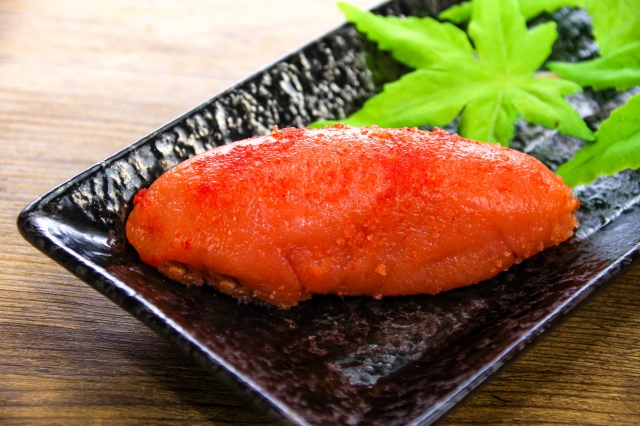
Okinawa
In Okinawa, Osechi-ryori is not common for New Year’s Day. Instead, Okinawa historically celebrates the New Year with dishes rooted in local ingredients and Ryukyu culture, which is known as Usanmi. These dishes are focused on abundance, health, and longevity, reflecting Okinawa’s unique culinary identity. Some examples include:
- Rafute (Braised Pork Belly)
This dish features tender pork belly simmered in soy sauce, sugar, and awamori (Okinawan rice spirit), showcasing the rich and savory flavors of the region. - Kubu Irichi (Stir-Fried Kelp)
A dish made from thinly sliced kelp stir-fried with pork, fish cake, or tofu, seasoned with soy sauce and Okinawan flavors. - Mimiga (Pig’s Ear Salad)
Thinly sliced pig’s ear is blanched and served with a tangy vinegar-based dressing. It’s a chewy and unique texture that’s popular in Okinawa. - Umi Budou (Sea Grapes)
These “green caviar” seaweed clusters are enjoyed fresh with a soy-based dipping sauce, adding a fresh and oceanic element to the meal. - Mozuku (Okinawan Seaweed)
Another ocean delicacy, this seaweed is typically served in a tangy vinegar sauce and is a staple in Okinawan cuisine. - Abura Miso (Seasoned Miso)
Okinawan-style miso is cooked with pork, sugar, and sake, creating a sweet and salty paste often served alongside rice. - Sata Andagi (Okinawan Donuts)
These sweet, deep-fried doughnuts are a favorite treat and may be included in the New Year’s spread as a dessert. - Shikwasa-based Dishes
Shikwasa, a citrus fruit native to Okinawa, is used in dressings, marinades, or drinks during the New Year celebration. - Okinawan Kamaboko (Fish Cakes)
Colourful fish cakes with unique shapes or patterns that reflect local culture are often part of the Osechi-ryori lineup.
https://www.kibun.co.jp/knowledge/shogatsu/database/2010local/index.html (from the ‘Kibun’ corporate website) *in Japanese language
